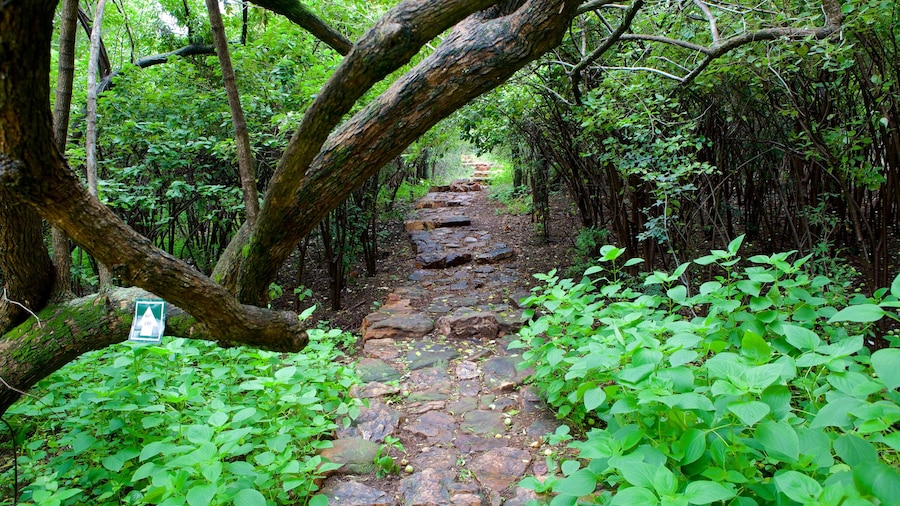Explore the site where an asteroid struck the grasslands above Pretoria more than 200,000 years ago.
Around 220,000 years ago, a 330,000-ton (300,000-tonne) asteroid struck the earth, leaving behind the Tswaing Crater. The asteroid was destroyed upon impact, but a 328-foot (100-meter) high ring of hills remains today. Walk around the rim of the crater, visit the museum and explore the surrounding wetlands.
The trail around the crater is 4.5 miles (7.2 kilometers) long. Hike the trail and look down into the pool of water at the base of the cone. Notice the thick bacterial growth that has developed along the edge of the pond. Be sure to bring water with you on the hike, since the terrain is arid and the sun can get very hot.
On the outside of the crater’s south rim, look for the remains of a salt mining factory. The factory mined the pond at the center of the crater, which was once very salty. Accordingly, the name Tswaing means “place of salt.” The salt concentration of the pond decreased over time, so the factory had to be closed in 1956 after 44 years in operation. Identify the manager’s house and the factory building, both of which still stand today.
Walk east of the crater to find wetlands, which are considered a conservation area due to their wide biodiversity. Look for otters, frogs and many species of birds, which are all common sights.
Nearly 300 feet (90 meters) of sediment sit at the bottom of the lake from the past 220,000 years. Scientists have studied the layers, which show that the whole area was once covered in a forest of yellowwood trees. Today the terrain around the crater bears mostly dry shrubs and short trees.
Visit the small museum near the crater to see an exhibition on the formation of the crater and its long history. Guided tours of the crater are available for a fee, but you will need to book in advance.
Tswaing Crater is located 25 miles (40 kilometers) north of Pretoria. Arrive by car and park in the free parking lot that neighbors the crater. The site is open daily and there is a fee for admission.




